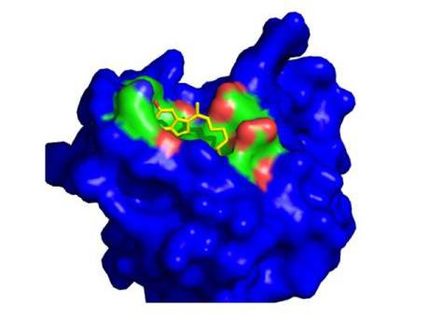New class of highly selective 5-HT4 receptor agonists provides the next generation of GI treatments
Advertisement
A scientific review of the different pharmacological profiles of 5-HT4 receptor agonists published in Neurogastroenterology and Motility concludes that, due to a more selective mode of action, next-generation 5-HT4 compounds are expected to be safer and more effective treatment options for common, debilitating gastrointestinal (GI) motility disorders such as chronic constipation (CC) and gastroparesis.
"Millions of people - adults and children - suffer from common, debilitating GI conditions that are caused by impaired motility," commented Jan Schuurkes, Chief Scientific Officer, Movetis NV, Belgium. "This research supports that the next generation of 5-HT4 receptor agonists has the potential to offer superior selectivity in the treatment of a variety of motility disorders and we are confident that these compounds have the potential to meet the needs of many doctors and patients seeking a more effective and safer prokinetic treatment."
Research in the last decade has focused on the development of high-affinity 5-HT4 receptor agonists designed to be free of the side effects associated with older-generation, nonselective compounds, such as cisapride and tegaserod. It is now known that 5-HT4 receptor agonists differ substantially, not only in their selectivity for other receptors or channels, but also in their interaction with the 5-HT4 receptor itself. Combined, these two properties support why next-generation, selective, 5-HT4 receptor agonists are expected to better target the GI system alone, resulting in greater safety for patients.
According to the authors of this review, Prof. Romain A Lefebvre (Heymans Institute of Pharmacology, Ghent University, Ghent, Belgium) and Joris H De Maeyer, PhD (Movetis NV, Belgium), 'We have known for a long time that 5-HT4 receptor agonists have considerable therapeutic potential for patients with motility disorders. Unfortunately, older generation drugs in this class have a high affinity for other tissue receptors or channels which, in some cases, can lead to adverse side effects, and thereby result in a negative perception of these drugs and confusion about their risk-benefit profile.'
RESOLOR(r) (prucalopride) is currently the most advanced selective, high-affinity 5-HT4 receptor agonist in research. It belongs to a new chemical class of 5-HT4 agonists that elicits responses in many GI tissues. Through this more selective approach, RESOLOR(r) appears to offer patients a novel enterokinetic treatment that increases colon motility and restores the slow movement of the bowels. This scientific review and the latest results from Phase III clinical trials evaluating the safety and effectiveness of RESOLOR(r) in patients with CC for whom laxatives do not provide adequate relief suggest that the compound has an attractive safety profile, making it a promising candidate for the treatment of this condition.
























































